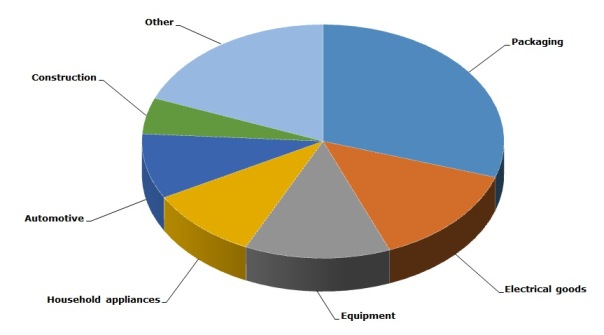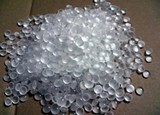Polypropylene is a highly sustainable and versatile thermoplastic polymer, which is being utilized in a wide range of applications thanks to its unique features. Polypropylene enjoys well-deserved popularity in many industries, including food packaging, electrical appliances, equipment, consumer goods, automotive industry, construction, transportation, energy sector, medical sector and healthcare, water management, etc.
Polypropylene: structure of the global demand by end-sector (2014)

Propylene commercial and industrial flexibility, capacity to form products with unique mix of properties, aesthetical value, reasonable cost effectiveness, ability to be made translucent, processability, low environmental impact, excellent mechanical and optical performance and other characteristics make it a strong competitor which can readily substitute plastics and many traditional materials, like glass and wood. Since its origination as a commercially viable product, polypropylene production has been an arena of significant innovation efforts and technological breakthroughs. These innovative endeavours penetrate each and every step of polypropylene manufacture and application, ranging from the use of specific catalysts (a shift from traditional Ziegler-Natta catalysts to metallocene catalysts) and the development of unique production technologies (e.g. Spherizone technology of a multi-zone circulating reactor developed by LyondellBasell) to constant widening the application range and improving and customizing material specifications (e.g. the use of polypropylene as a basic material for banknotes). The leading innovators in the polypropylene market include such companies as LyondellBasell, ExxonMobil, Sumitomo, Dow, Total, Prime Polymer, Mitsubishi and Borealis.
More information on the world’s polypropylene (PP) market could be found in the insightful research report “Polypropylene (PP): 2016 World Market Outlook and Forecast up to 2020”.
